Atlanta’s 2017 Living Walls Conference entered its seventh year by bringing artists from across the country to create murals that engaged and reflected the stories of Buford Highway residents, a roadway corridor that traverses immigrant pockets across several Metro Atlanta counties.
Co-founded by Peruvian native Monica Campana, Living Walls was born from her own journey as a street artist trying to find her voice in Atlanta’s evolving cityscape. The conference’s earliest incarnations were formatted as live art shows with a musical component, and in 2010 the first Living Walls gathered nearly 2000 people. But Campana’s shift from on-the-ground artist to organizer soon left her feeling like her voice was missing from the work.

“In seven years of creating over 100 murals with more than 100 artists in the city of Atlanta, our record has been about 75-80% white male-made [pieces]. The rest are by a mix of women and people of color, and that is a fucking problem when I, too, am a woman of color,” she explained. Campana’s zeal for representation made way for 2012’s first all-female conference. In 2017 – a year that has seen conversations about identity politics take center stage – the line-up focused on artists of color, women, and LGBTQ creators and subjects.
Notably, this year’s Living Walls conference coincided with a multitude of events that spotlighted Latinx visibility in the heart of the Deep South, including the Uateke Rock Fest, and Mexican Independence Day celebrations. It represented a rare opportunity for the Atlanta Latinx community; unlike Texas and Southern Florida – regions synonymous with the Chicano and Pan-Latin enclaves that populate them – the city does not often see large celebrations of Latinidad.
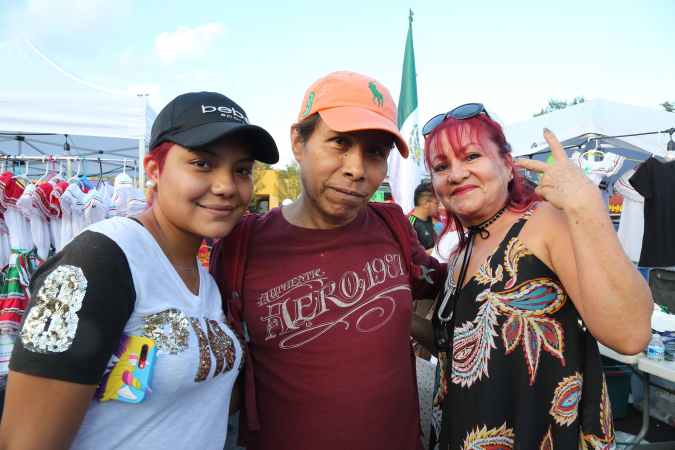
With Living Walls as the epicenter, the whirlwind weekend of art and community outreach highlighted the work to be done before Latinxs reconcile their sense of belonging in smaller cities and towns across the US. Overarching discussions included DACAmentation, the near daily ICE raids on local Latinx neighborhoods, and life under a government directly targeting our communities. The events also invited allies into the conversation, demonstrating we are not unique or alone on the path to dignity and equality, aligning Latinx suffrage with that of other locally underrepresented groups.
The murals mirrored many of these discussions. Buford Highway is a famous culinary destination, but residents of the counties it traverses – Brookhaven, Gwinnett, Fulton and DeKalb – often remain faceless and anonymous to the broader populace. A mural by Dianna Settles in Northeast Plaza paid tribute to the multiracial women of Athena’s Warehouse at Cross Keys High School, a non-profit focusing on “empowering underserved teen girls in the Atlanta community.”
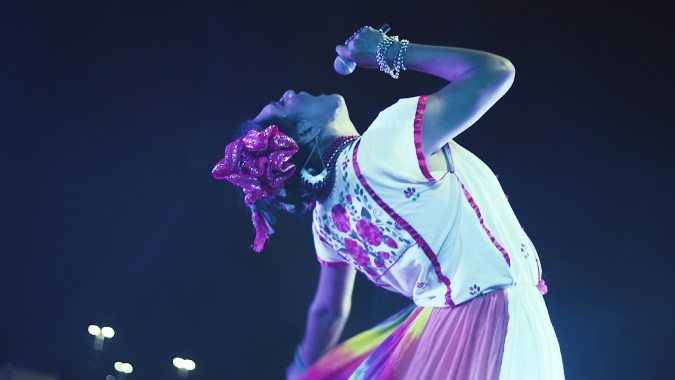
Northeast Plaza hosted two more murals, a yet unfinished piece by “Familias Separadas” creator Michelle Angela Ortiz, and a portrait of Mexican trans activist Estrella Sanchez by Tatyana Fazlalizadeh. On the last night of her community engagement trip, Fazlalizadeh met Sanchez and sparked an instant connection. “I thought her story was amazing and beautiful, and I wanted to tell it by amplifying her voice on a wall,” says the artist. Sanchez is quick to add, “I feel represented in my community, on the streets where people knew me before my activism. I’m a survivor as an immigrant, as indigenous, as trans; it’s important for me to make my existence visible, and that of people like me who aren’t always recognized.”
Living Walls also featured a series of lectures at Atlanta’s Latin American Association, where guest speakers dove deep into the challenges currently facing Buford Highway. Dr. Anna Kim, an Assistant Professor at the School of City and Regional Planning and a transplant from Los Angeles’ Koreatown, broke down local statistics to a near molecular level. She pointed out negligent community outreach from city officials when planning to demolish the iconic Plaza Latina, and misleading demographics that count white and Latinx mestizos as Caucasians, gravely underserving the needs of the community.
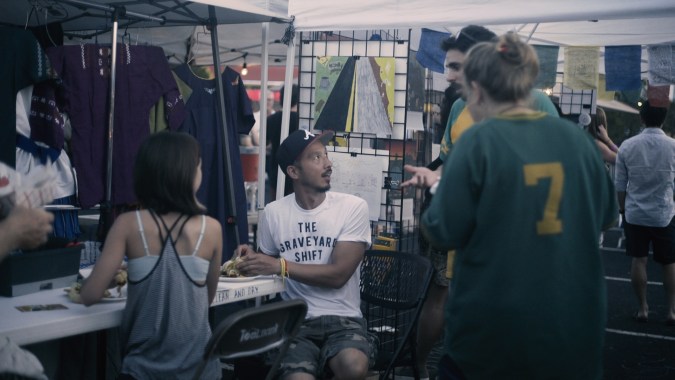
Gustavo Arellano – of famous syndicated column Ask a Mexican – also spoke, filling in clinical statistics with colored faces and stories. Arellano argued for the staying power of food, breaking down paradox many immigrants face; simultaneously perceived as an economic boogieman, a theme party, and the menu of choice for racists across the country. He also called for the protection of street vendors, who’ve recently faced multiple high profile attacks, describing them as “canaries in the coal mine warning against gentrification.”
The mayor of Brookhaven was also present at the meeting, signaling a willingness of elected officials to cooperate with the immigrant communities they serve at a local level. Marian Liou, creator of We Love BuHi – a community organization seeking to put equity at the forefront of Buford Highway’s development and design efforts – served as liaison with the mayor’s office. Liou and Campana met about a year ago and instantly found common ground over their commitment to art, food and representation, making their decision to bring Living Walls to Buford Highway an organic choice.
Campana, who came to the US when she was 15, reconciled her feelings of displacement by finding a like minded tribe within the world of street art. Similarly, Liou hopes that these large-scale murals across the highway serve a dual purpose: prompting people in positions of privilege to recognize the complex lives of minority groups, while also encouraging local communities of color to deal with the internalized shame brought on by a political system that regularly rejects them.
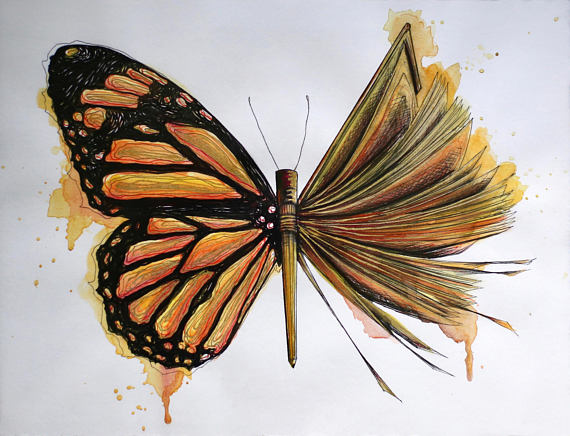
The repeal of DACA was another rallying call for attendees. Mexican artist Yehimi Cambrón tackled the subject with her mural of a monarch butterfly; bisected by a pencil, the butterfly’s right wing transforms into the pages of a book. Cambrón drew from her experiences as a DACAmented educator for Teach for America, as well as her own story migrating from the Mexican city of Michoacan, home to the monarch butterfly that flies north to Canada every year. “I created this piece as an intersection between someone who is undocumented and also an educator, thinking about the impact education has had on my life,” she says. “Someone said to me the other day the piece reminded them of the knowledge and wisdom people bring with them when they migrate.” She added, “it’s a symbol for myself and the community.”
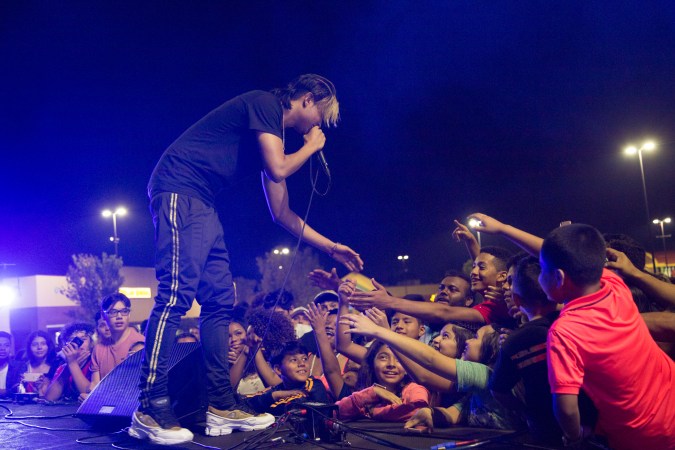
The weekend’s top event was a night market in Northeast Plaza, where local food, clothing and art vendors served families and residents from across the city. Live performances featured DJs Anónima and Esme of La Choloteca, Debit from NAAFI, the Super Lowkey collective, and a headlining show by Kap G, who shared that he used to pass out CDs on Buford Highway in the infancy of his career.
Buford Highway is a unifying intersection in the narratives of these different communities. The malls that line the corridor and host these murals are both shopping and community centers; safe havens where friendly faces and family-owned businesses anchor people who uprooted their lives to start somewhere new. These spaces are essential for communities seeking their place within the fabric of the cities they call home. On Buford Highway, now more than ever, they have a smiling face for the whole world to see.




